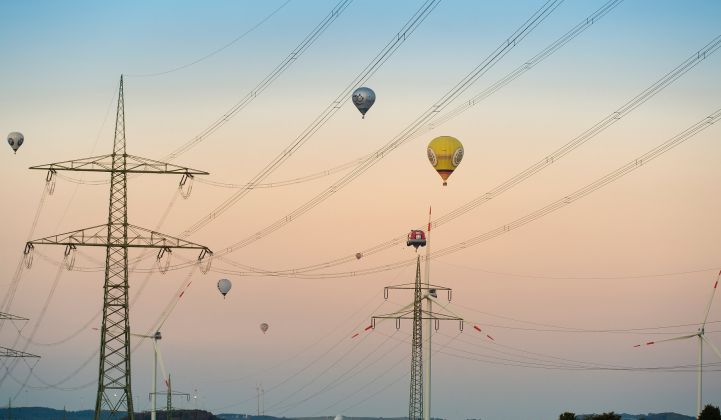LONDON — Europe needs an immense rollout of energy storage and other flexible energy resources if it's going to hit its 2050 net-zero target. As of today, the market largely remains stuck.
To date, Europe's big successes on the energy storage front have come from tenders to provide frequency response and other grid services. But those needs have largely been met; prices have fallen and a very short-lived boom has busted.
The decline was accelerated by better integration of Europe's markets, allowing assets in one country to provide services in others.
“Let me tell you a secret from continental Europe: Batteries are dead,” said Jochen Schwill, CEO of virtual power plant operator Next Kraftwerke, speaking at the recent Energy Storage Summit in London.
Prices on the frequency and primary reserve markets have been halved, Schwill told attendees. “It’s not working anymore,” he said. “When it comes to short-term flexibility, I think we have enough in the market.”
“When we take nuclear power and coal offline in Germany and add in renewables, the market might then send the price up again; we will see."
The market can, of course, get things wrong, he added.
In any case, things had better start improving for Europe's storage market. Recent research by Wood Mackenzie found that Europe is going to need 118 gigawatts of flexibility to balance out 298 gigawatts of variable renewable generation expected by 2040. That includes demand-side response, interconnectors and gas peakers as well as energy storage.
But there's only so much demand to turn up and down. Interconnectors are limited by geography. Only 17 EU member states have managed to hit the goal of having 10 percent of their power capacity coming via interconnections this year. Scrutiny on gas and diesel peakers is increasing.
That leaves energy storage as the obvious clean, scalable option available today.
No subsidies, please
Perhaps, as for many a clean-energy technology before it, what energy storage needs is a dose of subsidies. The European Investment Bank’s Francois Gaudet told the conference that Brussels is looking at altering state aid rules for energy storage so that more public money can flow.
But the prevailing position in Europe's storage industry seems to be that subsidies are not the answer; they might even be harmful.
“At Vattenfall, we don't believe such things are the way to go forward," Jake Dunn, commercial lead for Vattenfall’s innovation team, told GTM. "That's a point of principle."
But Dunn sees plenty of scope for regulators and policymakers to make “helpful interventions.” Several gigawatts of diesel and gas power engines are already paid to provide flexible power in the U.K., and these are unburdened by the emissions standards imposed on larger gas plants.
“What you've got is the ironic situation of, in the drive for more renewables, backup being provided by gas and diesel reciprocating engines that put out a lot of nitrous oxides and a lot of particulates," he said. "Their role in peaking could be [performed] by batteries."
Aside from the climate implications, U.K. doctors estimate that air pollution is behind 40,000 deaths a year across the country.
Leave it to the markets
The direction of travel for Europe's power market is clear: more renewables, cheaper storage, less baseload, and evolving demand patterns as electrification proliferates through the heat and transport sectors.
Given that reality, Duncan Dale, Statkraft’s VP for customers and new products in the U.K. and Ireland, is confident storage will find its feet if the market is left to do its job. “I think it's really important that we let market economics set the solutions rather than trying to choose winners."
At the moment, regulatory hurdles, such as double-charging (levying a battery both when it charges and discharges) can upend the economics of a project. Sometimes the failure of batteries to have a fitting definition in regulations is — still — making storage deployment at best awkward, at worst impossible.
“The most effective way of promoting the growth of storage is making sure there are enough routes to market,” Marek Kubik, market director of the storage technology provider Fluence, told GTM. “And that energy storage can compete on a level playing field with alternative technologies, be that peakers for generation or poles and wires for transmission and distribution."
Speaking in a personal capacity, Kubik said subsidies for storage could, in fact, be a “step backward.”
“Part of the renewables success story is the move...from subsidy to subsidy-free, and that has been something that...has [contributed to] a lot of confidence and momentum. One of the biggest objections was that it was subsidized and therefore it wasn't competitive,” he said.
Early-stage technologies should be eligible for innovation funding, but beyond that, “I don’t see [subsidies] helping,” Kubik concluded.




